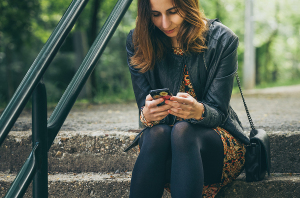by
Sean Ruck, Contributing Editor | July 03, 2020
From the July 2020 issue of HealthCare Business News magazine
In 2008, infectious disease clinicians and public health experts at Johns Hopkins University initially conceived the emocha app. The app was deployed in Uganda to monitor HIV patients. The company was commercialized in 2014, and used by the State of Maryland in 2015 to support remote monitoring amidst the Ebola outbreak. It was well-received, and put into use at the Johns Hopkins Biocontainment Unit to monitor healthcare workers for highly infectious diseases.
It worked through direct video observations, monitoring patients remotely as opposed to having them head to the clinic. Sebastian Seiguer, co-founder and CEO of telemedicine provider emocha Mobile Health Inc., was one of the people to realize the value of the app that Johns Hopkins had created. He licensed it from the hospital and his company added more functionality.
So this was the work emocha was doing for years. Keeping an eye on travelers coming in from India or Africa to monitor for Ebola for Baltimore, assisting the state of Mississippi with TB cases, monitoring healthcare workers for infectious disease at Johns Hopkins and dozens of other use cases for clients.



Ad Statistics
Times Displayed: 60894
Times Visited: 1960 Ampronix, a Top Master Distributor for Sony Medical, provides Sales, Service & Exchanges for Sony Surgical Displays, Printers, & More. Rely on Us for Expert Support Tailored to Your Needs. Email info@ampronix.com or Call 949-273-8000 for Premier Pricing.
When COVID arrived, the shift to handle the monitoring of staff at Johns Hopkins and other locales for the virus took hours, not days. But hospitals were scrambling with staffing decisions and logistics, determining what additional training needed to occur to ensure the safety of staff and patients and more. By late January, there was discussion about expanding COVID tracking to non-frontline staff and other hospitals. Knowing hospitals were already overburdened with process change and the new normal, it wasn’t realistic to expect that they would be able to keep the needed staff on top of the data being collected. Instead, emocha introduced their COVID tracker as a full service rather than a tech implementation. Seiguer explained why this was important. “I think the unique thing in COVID is speed of transition — everything you do has to be fast, has to be ahead of the curve. Means weekends, nights, everything.”
Seiguer says that the value of the monitoring is that healthcare systems are looking for a needle in a haystack and the service emocha provides finds that needle. It’s a small percentage of people who are monitored who are showing symptoms, but those symptoms — in the case of COVID, they’re focused on eight — will put an alert into the system. A report of concerning symptoms is sent to the customer twice a day. Whereas hospital switchboards have been overwhelmed with people calling in recent months, the report emocha provides is only utilizing recognized symptoms. According to Seiguer, that cuts the static down from maybe a thousand individuals with concerns to a small fraction of that number who should really get a close look and monitoring. This relieves some of the pressure on healthcare workers.

